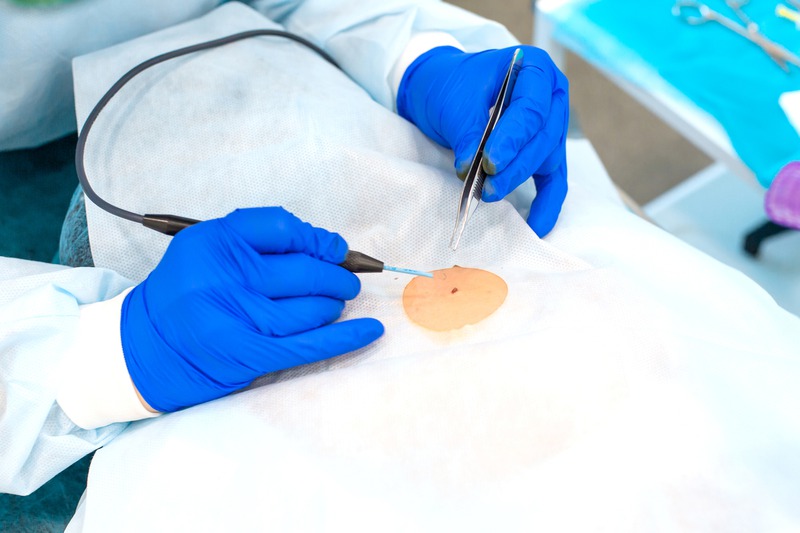Dental care has come a long way over the years, and with rapid advancements in technology, patients and dental professionals have more options than ever before. If you’ve visited a dentist recently, you might have noticed sophisticated equipment and digital systems that make procedures quicker, safer, and far more comfortable than in the past. But how safe and effective are these new dental technologies, and what do you need to know as a patient? Let’s talk about modern dental tech and explore what it truly means for your dental health.
Evolution of Dental Technologies
It wasn’t too long ago when dental visits meant a lot of anxiety due to uncomfortable tools and lengthy procedures. Now, technology is revolutionizing every step of oral care, from diagnostics and imaging to treatments and aftercare. The modern dental office now boasts digital X-rays, 3D imaging, laser therapies, computer-aided design and manufacturing (CAD/CAM), and so much more.
Why Technology Matters in Dentistry
-
Improves the accuracy of diagnosis
-
Minimizes discomfort and anxiety
-
Promotes minimally invasive procedures
-
Reduces treatment and recovery time
-
Enhances overall patient experience
The ultimate goal? Make your visit to the dentist as pain-free, safe, and efficient as possible.
Assessing Safety in Dental Innovations
Safety is a key concern whenever a new technology or device enters the dental field. Reliable dental tools and technologies must undergo rigorous testing to comply with medical safety standards. There are three main phases in determining whether a new dental technology is safe for public use.
How Are Dental Technologies Certified for Safety?
-
Preclinical Testing: This phase includes extensive laboratory testing, often on models or animal tissues, to measure potential risks or complications.
-
Clinical Trials: New tools are tested on volunteers in monitored environments to assess real-world effectiveness and safety.
-
Regulatory Approval: Medical agencies review all the results before approving the technology for dental practice.
As patients, knowing that your dentist is using approved, evidence-based technology can bring considerable peace of mind.
Digital Imaging and Diagnostics
One of the most visible upgrades in dental offices today is the shift from old-school X-rays to digital ones. These cameras deliver crystal-clear images with a fraction of the radiation, making them safer for both patients and dental staff.
Benefits of Digital Imaging
-
Significantly less radiation exposure
-
Faster data capture and processing
-
Instant image sharing with specialists
-
Better diagnostics for cavities, infections, and bone issues
Not only do these systems increase safety, but they also improve early detection, often catching problems before they become major headaches—or toothaches!
Minimally Invasive Dental Treatments
Patients often worry that new technology might mean more invasive procedures. In reality, the trend is toward less invasive, more precise treatments. Lasers, air abrasion tools, and ultrasonic devices are making dental care faster, gentler, and more reliable.
Laser Dentistry
Laser technology is now used for various dental procedures, including gum surgeries and cavity treatments. These tools can seal blood vessels or nerves as they work, reducing the need for sutures and speeding up healing times.
Advantages of Minimally Invasive Dentistry
-
Less pain and discomfort during recovery
-
Smaller incisions and less bleeding
-
Fewer follow-up appointments are needed
-
Lower infection risk
Patient Comfort and Experience
Let’s face it: dental anxiety is real for many people. New dental technologies are making trips to the dentist a lot less scary.
Techniques to Improve Patient Comfort
-
Noise-cancelling drills
-
Advanced anesthesia delivery (needle-free options)
-
Personalized treatment plans based on digital scans
Treatment is becoming more personalized every year, with dentists able to create crowns and bridges on the same day using 3D printing and CAD/CAM tools. No more waiting weeks for your new smile!
Effectiveness of New Dental Technologies
Now, let’s talk about effectiveness. Patients and dentists alike want to know if these high-tech gadgets actually produce better results.
How Do Modern Technologies Improve Dental Outcomes?
-
Better Diagnostics: Early detection means faster, less complex treatments.
-
Precision Treatments: 3D imaging and digital models improve the fit and function of dental restorations.
-
Improved Success Rates: Technologies like laser therapy enhance the outcomes of procedures such as root canals and gum treatments.
Because many new dental technologies have been proven through years of clinical research, you’re likely to see not just smoother procedures but healthier results.
Cost and Accessibility of Advanced Dental Care
Cutting-edge dental equipment wasn’t always affordable or accessible, but times are changing. While some advanced treatments still come at a premium, technology often brings down costs over time and expands access to care.
Factors Influencing Costs
-
Type of technology used
-
Location and size of the dental clinic
-
Insurance coverage and payment plans
-
Experience level of the dental professional
Patients are encouraged to discuss options and costs with their dental provider to find treatments that fit their needs and budget. If you’re considering an advanced procedure, it’s a great idea to schedule a consultation with an experienced dentist who can explain the best options for your unique smile.
Emergencies and Technology in Dental Care
Sudden tooth pain, knocked-out teeth, or broken restorations can be incredibly stressful. New dental devices and protocols are making emergency care both quicker and safer. Advanced diagnostic software can rapidly identify the source of a problem, while same-day restorative options get you back to normal fast.
If you ever need emergency dental care in Jaffrey, ask what technologies are available to make your experience as comfortable and efficient as possible. From digital imaging to rapid repairs, today’s dentistry is truly equipped to handle the unexpected.
Cosmetic Dentistry Advances
Are you looking to improve your smile? Technology has made cosmetic procedures such as teeth whitening, clear aligners, and bonding more predictable and accessible. Digital smile design systems allow you to preview your results before treatment begins.
Cosmetic options have expanded for those interested in fixing chips, cracks, or gaps in their teeth. You can click for details on dental bonding to see how this procedure has benefited from advances in materials and application techniques, offering natural results with minimal downtime.
How to Judge Credibility and Safety for Yourself
Selecting the best and safest dental technology doesn’t have to fall all on your shoulders. Here’s how to make wise choices:
Tips for Smart Dental Care Choices
-
Ask your dentist what technologies they use and why
-
Request information about the safety and efficacy of recommended treatments
-
Seek out clinics and professionals who keep up with continuing education
-
Look for certifications and up-to-date equipment when choosing a dental provider
-
Don’t hesitate to get a second opinion if you are unsure
Final Thoughts
The future of dental care is exciting, filled with promising new technologies that prioritize your safety and aim to give you a healthier, more confident smile. While the learning curve can be intimidating, rest assured that most dental offices are adopting new equipment not for the sake of novelty but to serve you better. As a patient, staying informed and involved in your dental health decisions is the best way to make the most of these advancements.
The next time you visit your dental clinic, take a moment to ask about the technologies used. You might be surprised at how far things have come and how these innovations can contribute to a better dental experience for everyone.





